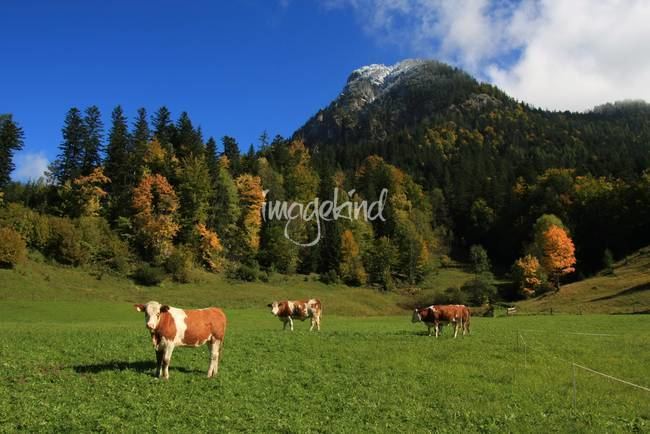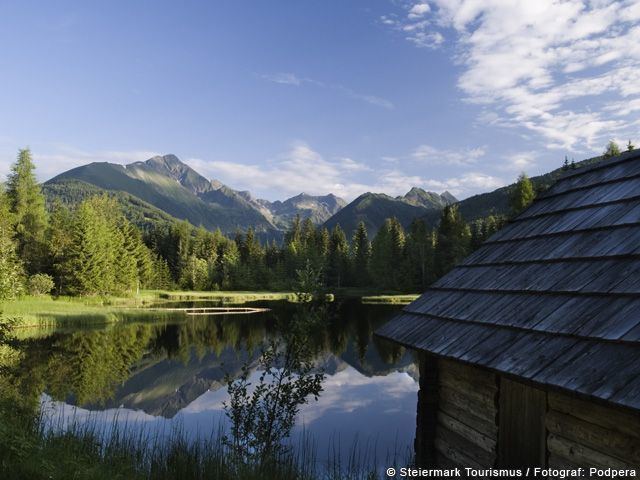Country Austria Capital | Area 16,401.04 km2 Population 1,221,014 | |
 | ||
Destinations Points of interest Eggenberg Palace - Graz, Schloßberg, Styrian Armoury, Hoher Dachstein, Mariatrost Basilica | ||
Map of Styria
Styria (German: Steiermark, [ˈʃtaɪ̯.ɐˌmaːk], Slovene/Croatian: Štajerska, Hungarian: Stájerország, Czech: Štýrsko) is a state or Bundesland, located in the southeast of Austria. In area it is the second largest of the nine Austrian federated states, covering 16,401 km2 (6,332 sq mi). It borders Slovenia and the Austrian states of Upper Austria, Lower Austria, Salzburg, Burgenland, and Carinthia. The population (as of 2016-01-01) was 1,231,865. The capital city is Graz which had 276,526 inhabitants at the beginning of 2015.
Contents
- Map of Styria
- Steiermark von oben styria from above
- Austria wunderschne steiermark 01
- Etymology
- Geography
- History
- Economy
- Administrative divisions
- Statutory city
- Other districts
- Politics
- 2005 elections
- Notable people
- References

Steiermark von oben styria from above
Austria wunderschne steiermark 01
Etymology

The March of Styria derived its name from the original seat of its ruling Otakar dynasty: Steyr, in today's Upper Austria. In German, the area is still called "Steiermark" while in English the Latin name "Styria" is used. The ancient link between Steyr and Styria is also apparent in their nearly identical coats of arms, a white Panther on a green background.
Geography
The term "Upper Styria" (German: Obersteiermark) used by an Austrian refers to the northern and northwestern parts of the federal-state (districts Liezen, Murau, Judenburg, Knittelfeld, Leoben, Bruck an der Mur, and Mürzzuschlag). The term "West Styria" (Weststeiermark) is used for the districts to the west of Graz (Voitsberg, Deutschlandsberg, western part of the district Leibnitz); the districts east of Graz (Weiz, Hartberg, Feldbach, Fürstenfeld, and Radkersburg) are referred to as "East Styria" (Oststeiermark). The western and eastern parts of the district Graz-Umgebung may or may not be considered parts of West and East Styria, respectively. The southern parts of the Duchy of Styria, which have formed part of Yugoslavia and later Slovenia since 1918 (with the exception of World War II), were (and sometimes colloquially still are) referred to as "Lower Styria" (Untersteiermark; Slovene: Štajerska).
History
During early Roman times, Styria was inhabited by Celtic tribes. After its conquest by the Romans, the eastern part of what is now Styria was part of Pannonia, while the western one was included in Noricum. During the Barbarian invasions, it was conquered or crossed by the Visigoths, the Huns, the Ostrogoths, the Rugii, and the Lombards. Slavs, who first were under the domination of the Avars, settled in the valleys of this country (around 600 and onwards). At the same time Bavarian people (under Frankish domination) began to expand their area to the south and east and absorbed the Slavic population.
In 1180 Styria separated from the Duchy of Carinthia and became a Duchy of its own; in 1192 the Austrian Duke Leopold V. became also Duke of Styria. Later Styria formed the central part of Inner Austria.
Styria developed culturally and economically under Archduke John of Austria between 1809 and 1859.
In 1918, after World War I, it was divided into a northern section (forming what is the current Austrian state), and a southern one, called Lower Styria, inhabited mostly by ethnic Slovenians, and which was annexed to Yugoslavia, and later in Slovenia.
Economy
As elsewhere in the developed world, there has been a shift away from the manufacturing sector towards the service sector in Styria. This has had negative consequences for the industrial regions of upper Styria which have suffered a steady decline in population in recent years.
In 2004 Styria had the strongest economic growth rate in Austria at 3.8%—mainly due to the Graz area which saw strong economic growth that year and has continued to grow in economic and population terms since then.
Styria is home to more than 150 clean technology companies, of which one dozen are world technology leaders in their field. The revenue of Styrian cleantech companies totals €2.7 billion. This equals to 8 percent of the Gross Regional Product (GRP), and is one of the highest concentrations of leading clean technology companies in Europe. The companies have an average (real) growth rate of 22 percent per year—well above the worldwide cleantech market growth of 18 percent per year. The region created roughly 2,000 additional green jobs in 2008 alone.
Administrative divisions
The state is divided into 13 districts (Bezirke), one of them a statutory city.
Statutory city
Other districts
Politics
The state had been a stronghold of the Austrian People's Party (ÖVP) since 1945. Graz however is a stronghold of the far left Communist Party (KPÖ). The governor (Austrian political term: Landeshauptmann) has usually been an ÖVP member.
2005 elections
In the 2005 elections for state parliament the Social Democrats (SPÖ) under their regional chairman Franz Voves won the majority after the ÖVP had damaged its credibility through scandals and the secession of a high-ranking party member who took part in the 2005 elections after setting up his own party. In these elections, the KPÖ also received many votes after it had gained much popularity through its role in local politics in Graz during the preceding few years. The two right-wing populist parties, the Freedom Party of Austria (FPÖ) and the Alliance for the Future of Austria (BZÖ), failed to win seats.
